#Captivating South American Landmarks: A Journey through Architectural Marvels Captivating South American Landmarks: A Journey through Architectural Marvels
Embark on a breathtaking adventure through the rich cultural heritage of South America as we delve into the captivating world of its architectural marvels. From the ancient ruins of Machu Picchu to the modern wonders of Brasília, this remarkable continent boasts an array of stunning landmarks that will leave you in awe. In this blog post, we will explore the architectural wonders that define South America, shedding light on their historical significance and highlighting their unique features. So, fasten your seatbelts and get ready to be transported to a realm where history, culture, and awe-inspiring design converge in perfect harmony.
Machu Picchu
Machu Picchu is an awe-inspiring archaeological site nestled high in the Andes Mountains of Peru. This ancient Incan city is renowned for its mesmerizing beauty, impressive architecture, and mysterious history. In this section, we will explore the captivating history and discovery of Machu Picchu, appreciate the remarkable architectural and engineering feats of this wonder, and discover the popular attractions and highlights that await those who embark on a journey to this iconic landmark.
The History and Discovery of Machu Picchu
Machu Picchu holds a rich historical significance that continues to intrigue researchers and visitors alike. Built during the peak of the Incan Empire in the 15th century, its original purpose remains shrouded in mystery. The site was abandoned by the Incas and hidden from the outside world for centuries until it was rediscovered in 1911 by the American explorer Hiram Bingham.
Bingham’s expedition brought Machu Picchu to international attention, exposing its majestic architecture and breathtaking views to the world. Today, it stands as a testament to the advanced Incan civilization that once thrived in the Andes.
The Architecture and Engineering Feats of Machu Picchu
The architectural marvels of Machu Picchu are truly remarkable. The city was constructed using intricate stonework without the use of mortar, showcasing the engineering prowess of the Incas. The precision with which the stones were fitted together, often with irregular shapes, is a testament to the Inca’s expert craftsmanship.
One of the most famous structures within Machu Picchu is the Intihuatana, a carved stone pillar believed to have served as an astronomical observatory and religious shrine. This sophisticated structure demonstrates the Incan’s deep understanding of astronomy and their spiritual connection with the natural world.
Popular Attractions and Highlights of Machu Picchu
Machu Picchu offers a plethora of attractions and highlights that make it a must-visit destination. The iconic Sun Gate, known as Intipunku, welcomes visitors with a breathtaking view of the ruins and the surrounding landscape. This spot is especially popular for witnessing the sunrise over the ancient city, creating a truly magical experience.
The Temple of the Sun, with its impressive stone walls and trapezoidal windows, is another notable highlight within Machu Picchu. It is believed to have been a ceremonial and astronomical site, further showcasing the Incan’s advanced knowledge and connection to the cosmos.
For adventurous souls, hiking the Inca Trail to reach Machu Picchu is an unforgettable experience. This multi-day trek traverses stunning landscapes and offers a unique glimpse into the region’s natural beauty and diverse ecosystems.
Visitors can also explore the Inti Watana, a stone structure believed to have served as a solar clock, and the Temple of the Three Windows, an architecturally captivating building with extraordinary views of the surrounding mountains.
In conclusion, Machu Picchu is a captivating South American landmark that offers a mesmerizing blend of history, architectural marvels, and breathtaking scenery. Its mysterious origins, remarkable engineering feats, and popular attractions make it a bucket list destination for travelers from around the world. Whether you are an avid history enthusiast, an adventurer seeking a thrilling trek, or simply a wanderer in search of beauty, Machu Picchu is bound to leave you in awe of its splendor.
 Aerial view settlements on grassy peaceful valley surrounded with green hills and calm river on sunny day (Photo by Miriam Espacio)
Aerial view settlements on grassy peaceful valley surrounded with green hills and calm river on sunny day (Photo by Miriam Espacio)
Christ the Redeemer
Christ the Redeemer is one of the most iconic landmarks in South America, standing tall in the vibrant city of Rio de Janeiro, Brazil. This colossal statue of Jesus Christ is not only a sight to behold but also holds great symbolism and significance for the people of Brazil and visitors from around the world.
The Symbolism and Significance of Christ the Redeemer
At the peak of Corcovado Mountain, the outstretched arms of Christ the Redeemer welcome all who come near, symbolizing peace, love, and the embracing nature of Christianity. This awe-inspiring monument serves as a powerful representation of Brazil’s religious faith and cultural identity.
For the locals, Christ the Redeemer symbolizes hope, protection, and assurance in times of struggle and hardship. It is a beacon of faith, reminding people that they are never alone and that there is always someone watching over them. Additionally, the statue serves as a powerful reminder of the historical connection between religion and the Brazilian people.
The Construction and Design of Christ the Redeemer
Christ the Redeemer was designed by the Brazilian engineer Heitor da Silva Costa and sculpted by the French sculptor Paul Landowski. The construction of this marvelous statue took place between 1922 and 1931, culminating in its grand unveiling.
The statue itself stands at an impressive height of 98 feet (30 meters) and weighs a staggering 635 metric tons. It is made of reinforced concrete and covered with soapstone, which helps protect it from the elements. The design incorporates Art Deco influences, with its clean lines and sense of grandeur.
Visiting Christ the Redeemer
Visiting Christ the Redeemer is an unforgettable experience that offers breathtaking views of Rio de Janeiro and its stunning surroundings. To reach the statue, visitors can take a scenic train ride through the lush Tijuca Forest, followed by an elevator or escalator ascent to the viewing platform.
Once at the top, visitors are rewarded with panoramic vistas of Rio de Janeiro, including the famous Copacabana Beach, Sugarloaf Mountain, and Guanabara Bay. The feeling of being towering above the city, while at the same time being embraced by the outstretched arms of Christ, is truly awe-inspiring.
Remember to check the weather conditions before visiting, as the statue may be covered in clouds or fog, limiting visibility. Also, be prepared for crowds, especially during peak tourist seasons. It’s advisable to arrive early in the day to avoid long queues and make the most of your visit.
 Christ the Redeemer (Photo by Matheus Bertelli)
Christ the Redeemer (Photo by Matheus Bertelli)
In conclusion, Christ the Redeemer stands as an enduring symbol of faith, hope, and Brazilian culture. Its impressive construction and design, coupled with its breathtaking views, make it a must-visit landmark for anyone exploring the wonders of South America. Whether you are religious or not, a visit to Christ the Redeemer is an experience that will leave you feeling inspired and in awe of human achievements.
Related Website: Official Website of Christ the Redeemer
Iguazu Falls
Iguazu Falls is a breathtaking natural wonder located on the border of Brazil and Argentina. It is one of the most captivating and awe-inspiring landmarks in South America, attracting millions of visitors each year. In this section, we will explore the magnificence of Iguazu Falls, delve into its unique ecological importance, and discover the various activities and tours available for visitors to enjoy.
Exploring the Magnificence of Iguazu Falls
As you approach Iguazu Falls, the thunderous roar of cascading water becomes more prominent, building anticipation for the mesmerizing sight that awaits. This majestic waterfall system consists of a series of over 275 individual falls, spanning nearly two miles in width. The sheer power and grandeur of Iguazu Falls is a sight to behold, leaving visitors in awe of nature’s incredible beauty.
Image: Aerial View of Iguazu Falls
The Unique Ecological Importance of Iguazu Falls
Beyond its sheer beauty, Iguazu Falls holds immense ecological importance. The falls are nestled within the lush Atlantic Rainforest, one of the most biologically diverse ecosystems on the planet. This pristine environment provides a habitat for numerous plant and animal species, many of which are endangered or endemic to the region.
Iguazu Falls serves as a vital water source for the surrounding flora and fauna, supporting a delicate balance of life within the ecosystem. The constant spray from the falls creates a unique microclimate, resulting in the growth of vibrant vegetation and fostering a thriving ecosystem.
Image: Exotic Bird Species in the Atlantic Rainforest
Activities and Tours at Iguazu Falls
Visitors to Iguazu Falls have a plethora of activities and tours to choose from, ensuring an unforgettable experience. One popular option is to explore the falls from various viewpoints along well-marked trails. These trails offer different perspectives of the cascades, allowing visitors to marvel at the incredible power and beauty up close.
For the more adventurous, boat tours are available, offering an exhilarating ride along the river and beneath the cascading water. This thrilling experience provides a unique opportunity to feel the mist and hear the thunderous sound of Iguazu Falls, immersing visitors in its captivating energy.
Another must-see attraction is the Devil’s Throat, a U-shaped waterfall that marks the border between Argentina and Brazil. Standing on the platform overlooking the falls, visitors can witness the immense volume of water plunging down with astonishing force, creating an unforgettable spectacle.
Image: View of Devil’s Throat at Iguazu Falls
In conclusion, Iguazu Falls is a true wonder of nature that captivates all who have the privilege to witness its splendor. Its massive scale, ecological significance, and exciting activities make it a must-visit landmark for any traveler exploring South America. Whether you are seeking adventure, a deeper appreciation for nature, or simply a breathtaking experience, Iguazu Falls will undoubtedly leave an indelible mark on your journey.
Palacio de Bellas Artes
The Palacio de Bellas Artes, also known as the Palace of Fine Arts, is a renowned landmark located in Mexico City, Mexico. This majestic architectural marvel stands as a testament to the rich cultural heritage and artistic excellence of South America. Let’s dive into the history, architecture, art, and overall experience of Palacio de Bellas Artes.
The History and Architecture of Palacio de Bellas Artes
The Palacio de Bellas Artes was initially conceived in 1904 by the then-president of Mexico, Porfirio Díaz, with the aim of constructing a grand building dedicated to the arts. However, due to political and financial challenges, the construction faced multiple delays and interruptions.
Finally, in 1932, after several design iterations, the Palacio de Bellas Artes was officially inaugurated. The architectural style of the building is a stunning blend of Art Nouveau and Art Deco, creating a visually striking masterpiece. With its intricate details, vibrant colors, and a blend of various architectural elements, the Palacio de Bellas Artes stands as a symbol of Mexico’s artistic heritage.
The Art and Exhibitions at Palacio de Bellas Artes
As one of the most important cultural centers in Mexico, the Palacio de Bellas Artes hosts a diverse range of art exhibitions and performances. The museum within the palace showcases a vast collection of Mexican and international artwork, including paintings, sculptures, photography, and more.
Visitors can marvel at renowned pieces by influential artists such as Diego Rivera, Rufino Tamayo, Frida Kahlo, and David Alfaro Siqueiros. The Palacio de Bellas Artes provides a platform for both established and emerging artists, ensuring a dynamic and ever-evolving art scene.
Experiencing Palacio de Bellas Artes
Experiencing the Palacio de Bellas Artes is an immersive and captivating journey for art enthusiasts and tourists alike. Upon entering the palace, visitors are greeted by the breathtaking beauty of the interior, adorned with stunning murals and ornate details. The main highlight of the building is the stunning glass curtain made by Tiffany & Co., which captures the essence of the sun and the moon.
Attending a performance at the Palacio de Bellas Artes is an absolute must-do. The grand theater hosts a variety of events, including ballet, opera, classical music concerts, and theatrical performances. The acoustics are superb, and the atmosphere is enchanting, creating a truly magical experience for the audience.
Whether you are exploring the museum, attending a performance, or simply admiring the architectural magnificence, Palacio de Bellas Artes offers a truly unforgettable experience that celebrates the diverse artistic expressions of South America.
 Interior of modern living room (Photo by Rachel Claire)
Interior of modern living room (Photo by Rachel Claire)
In conclusion, the Palacio de Bellas Artes stands as a beacon of artistic brilliance in South America. Its rich history, awe-inspiring architecture, impressive art collections, and captivating performances make it a must-visit destination for anyone seeking to immerse themselves in the vibrant cultural landscape of Mexico City.
The Lost City
The Discovery and Excavation of Ciudad Perdida
 The ruins of a roman temple in the mountains (Photo by Christophe RASCLE)
The ruins of a roman temple in the mountains (Photo by Christophe RASCLE)
Located deep in the dense jungles of the Sierra Nevada de Santa Marta mountain range in Colombia, the Lost City, or Ciudad Perdida, is an awe-inspiring archaeological site that remains shrouded in mystery and intrigue. Discovered in 1972 by a group of treasure hunters, the Lost City is believed to have been built by the indigenous Tayrona civilization around 800 CE, making it older than the famous Machu Picchu.
The journey towards the discovery of Ciudad Perdida wasn’t an easy one. Deep in the heart of the Colombian jungle, the site had remained hidden from modern civilization for centuries. It wasn’t until a group of guaqueros stumbled upon stone steps leading up a mountainside that the existence of this ancient city was brought to light. Excavations began shortly after, revealing a fascinating world frozen in time.
Exploring the Ancient Ruins and Natural Surroundings
 Green tropical island with palms near sea (Photo by Bruno Pires)
Green tropical island with palms near sea (Photo by Bruno Pires)
Exploring the Lost City is like stepping into a time capsule, as visitors are transported back to a bygone era. The ancient ruins consist of terraced platforms, ceremonial plazas, and an intricate network of stone pathways. Walking through these remnants of a once-thriving civilization evokes a sense of awe and wonder. The Tayrona people’s advanced architectural techniques are evident in the precision of their stone-cutting and construction, showcasing their engineering prowess.
Beyond the ruins, the natural surroundings of the Lost City are equally captivating. Lush rainforests, mist-covered mountains, and cascading waterfalls create a picturesque backdrop for this archaeological gem. The abundance of flora and fauna in the area adds to the overall enchantment of the place, making it a paradise for nature lovers and adventure seekers alike.
Trekking to Ciudad Perdida
 A Person Standing Alone on Country Road (Photo by Adil)
A Person Standing Alone on Country Road (Photo by Adil)
Getting to the Lost City is not for the faint of heart. To reach this hidden gem, visitors must embark on a challenging and rewarding multi-day trek through the Colombian jungle. The journey takes approximately four to six days and covers a distance of around 46 kilometers (28 miles), traversing rugged terrains, crossing rivers, and ascending steep slopes.
While physically demanding, the trek to Ciudad Perdida offers an unparalleled opportunity to immerse oneself in the natural beauty and cultural heritage of the region. Along the way, trekkers encounter indigenous communities, learn about their customs and traditions, and witness firsthand the harmonious relationship between the Tayrona people and their environment.
As trekkers finally arrive at the Lost City, a sense of accomplishment and wonder fills the air. Standing amidst the ancient ruins, surrounded by breathtaking landscapes, one can’t help but marvel at the architectural marvels and the historical significance of this mystical site.
In conclusion, the Lost City, or Ciudad Perdida, is a captivating South American landmark that takes visitors on a journey back in time. The discovery and excavation of this archaeological gem, the exploration of its ancient ruins and natural surroundings, and the challenging trek to reach it all contribute to making the Lost City an extraordinary destination for adventurers and history enthusiasts alike. So, if you’re up for a truly unique and awe-inspiring experience, make sure to include the Lost City in your travel bucket list.
Conclusion
In conclusion, South America is a treasure trove of captivating landmarks and architectural marvels that are sure to leave any traveler in awe. From the ancient ruins of Machu Picchu in Peru to the iconic Christ the Redeemer statue in Brazil, there is no shortage of stunning sights to explore on this continent.
These landmarks not only showcase the rich history and diverse culture of South America but also highlight the incredible architectural skills of the past and present. The intricate details, grandeur, and unique designs of these landmarks are a testament to human creativity and ingenuity.
Whether you are a history enthusiast, an architecture lover, or simply someone who appreciates breathtaking views, South America offers an abundance of landmarks that will captivate your senses and leave a lasting impression.
So, pack your bags, grab your camera, and embark on a journey through the architectural marvels of South America. Immerse yourself in the beauty and wonder of these landmarks, and create memories that will last a lifetime.





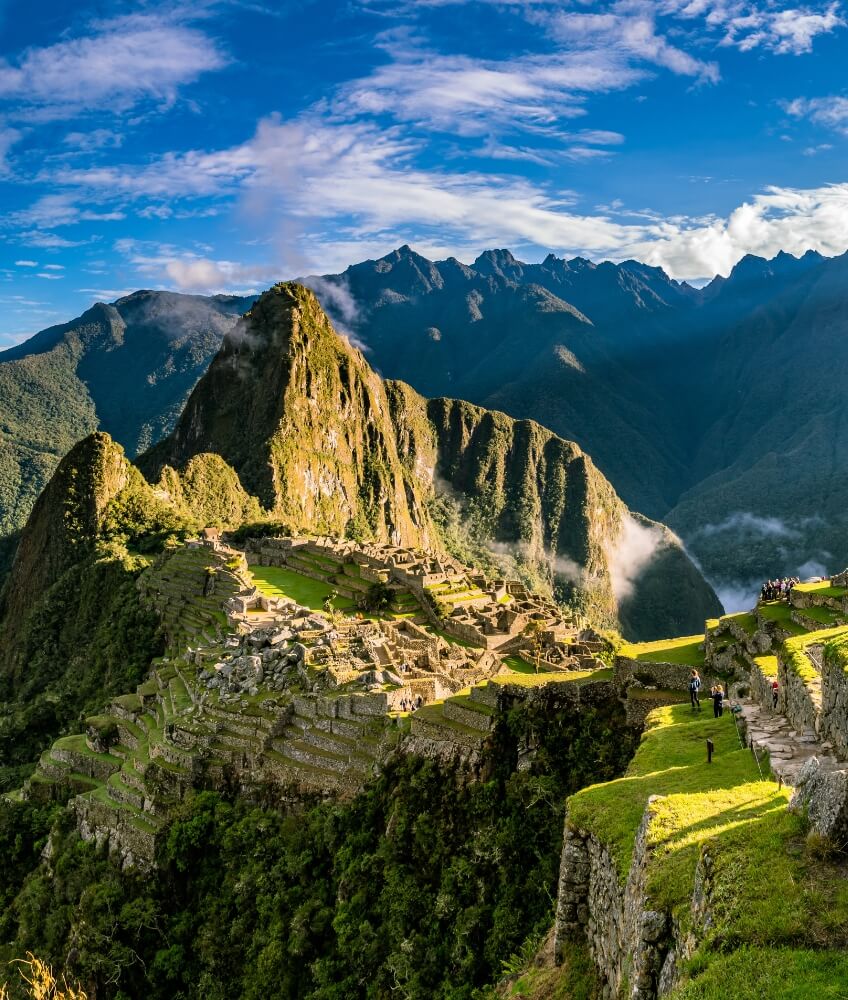

 From above of faceless travelers with backpacks in casual clothes walking along narrow dirty path in lush green jungle during hiking tour (Photo by
From above of faceless travelers with backpacks in casual clothes walking along narrow dirty path in lush green jungle during hiking tour (Photo by 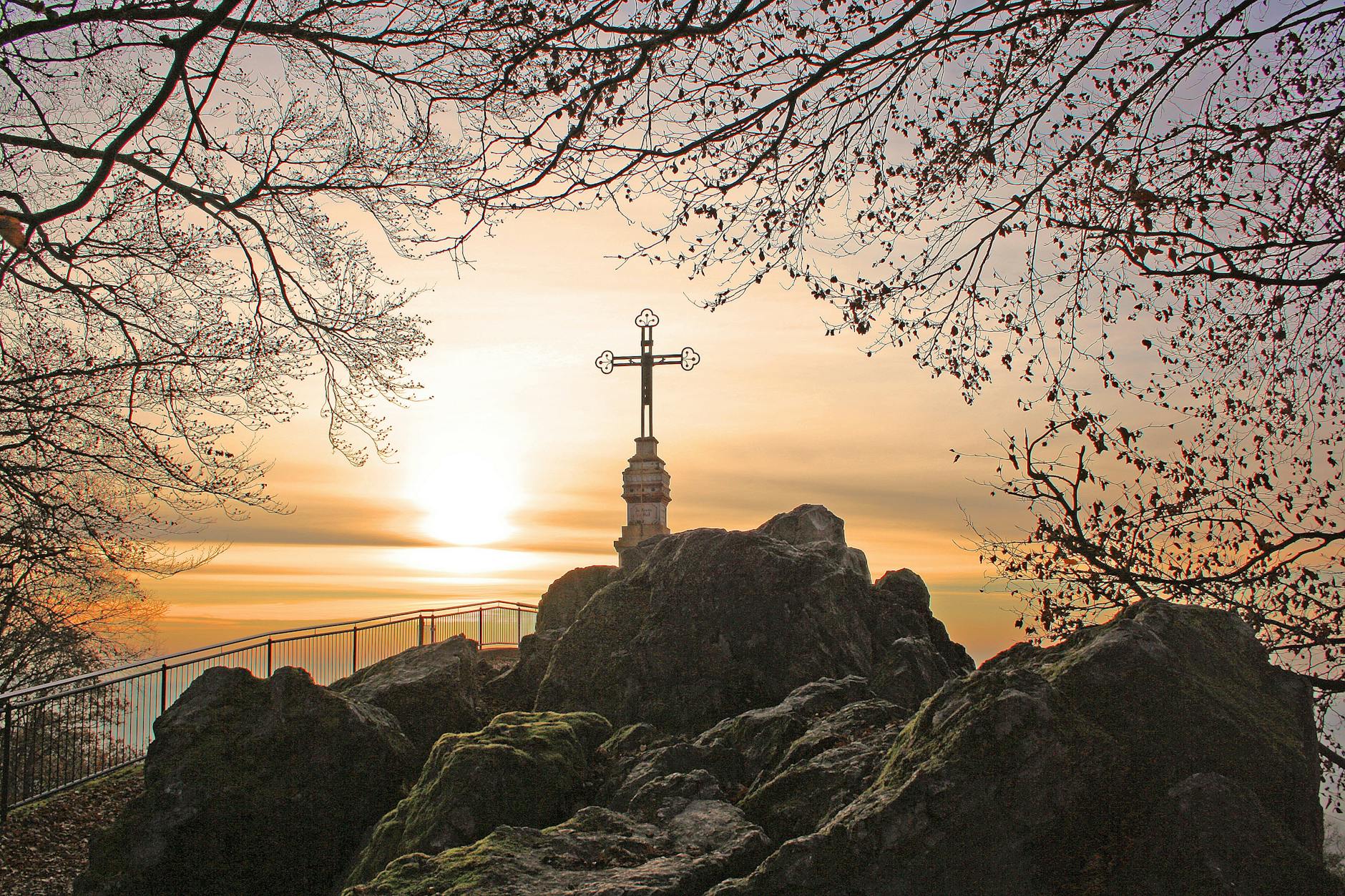 Cross on Top of Rock (Photo by
Cross on Top of Rock (Photo by  Anonymous lady swimming undersea near reef (Photo by
Anonymous lady swimming undersea near reef (Photo by  Flock of Penguins on Rock (Photo by
Flock of Penguins on Rock (Photo by  Brown Nipa Hut on Body of Water (Photo by
Brown Nipa Hut on Body of Water (Photo by 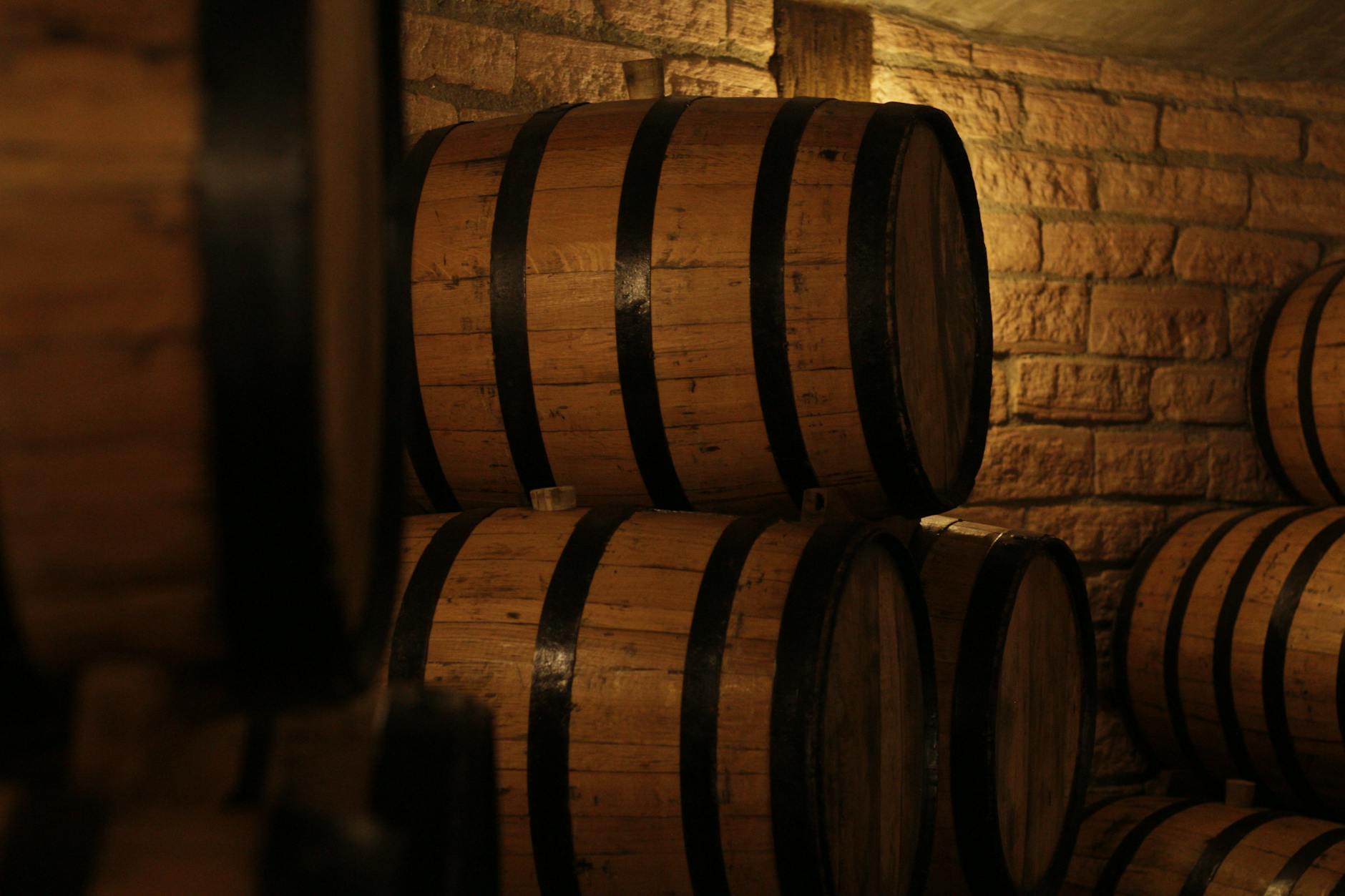 Heap of wooden barrels arranged together in underground wine cellar with warm light (Photo by
Heap of wooden barrels arranged together in underground wine cellar with warm light (Photo by 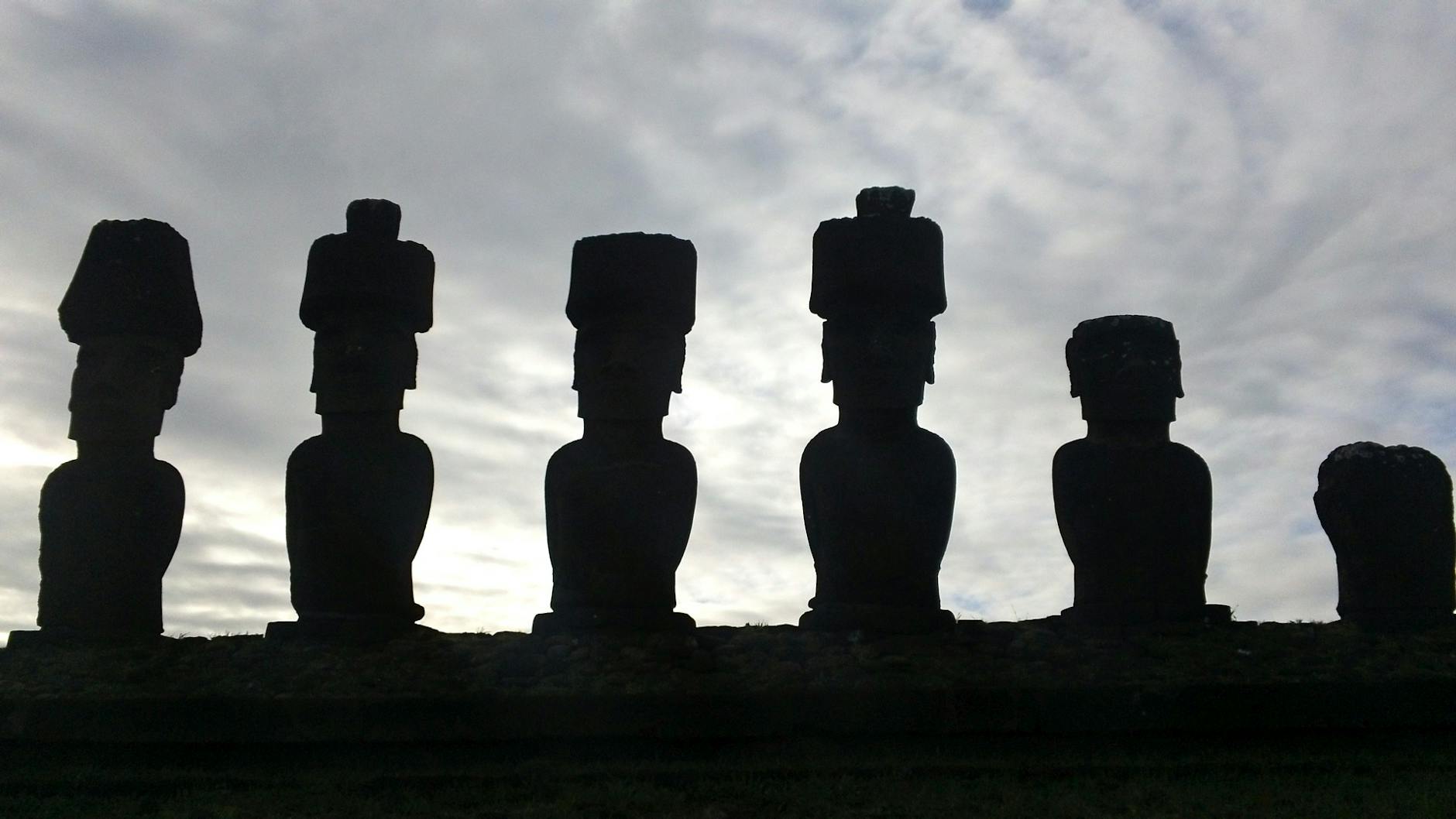 Moai Statue in Easter Island (Photo by
Moai Statue in Easter Island (Photo by  Tropical sandy beach with motorbike and palms (Photo by
Tropical sandy beach with motorbike and palms (Photo by  Spacious swimming pool in modern villa (Photo by
Spacious swimming pool in modern villa (Photo by 
 White and Black Bird on Tree Branch (Photo by
White and Black Bird on Tree Branch (Photo by  Close-up Photo of Grizzly Bear (Photo by
Close-up Photo of Grizzly Bear (Photo by 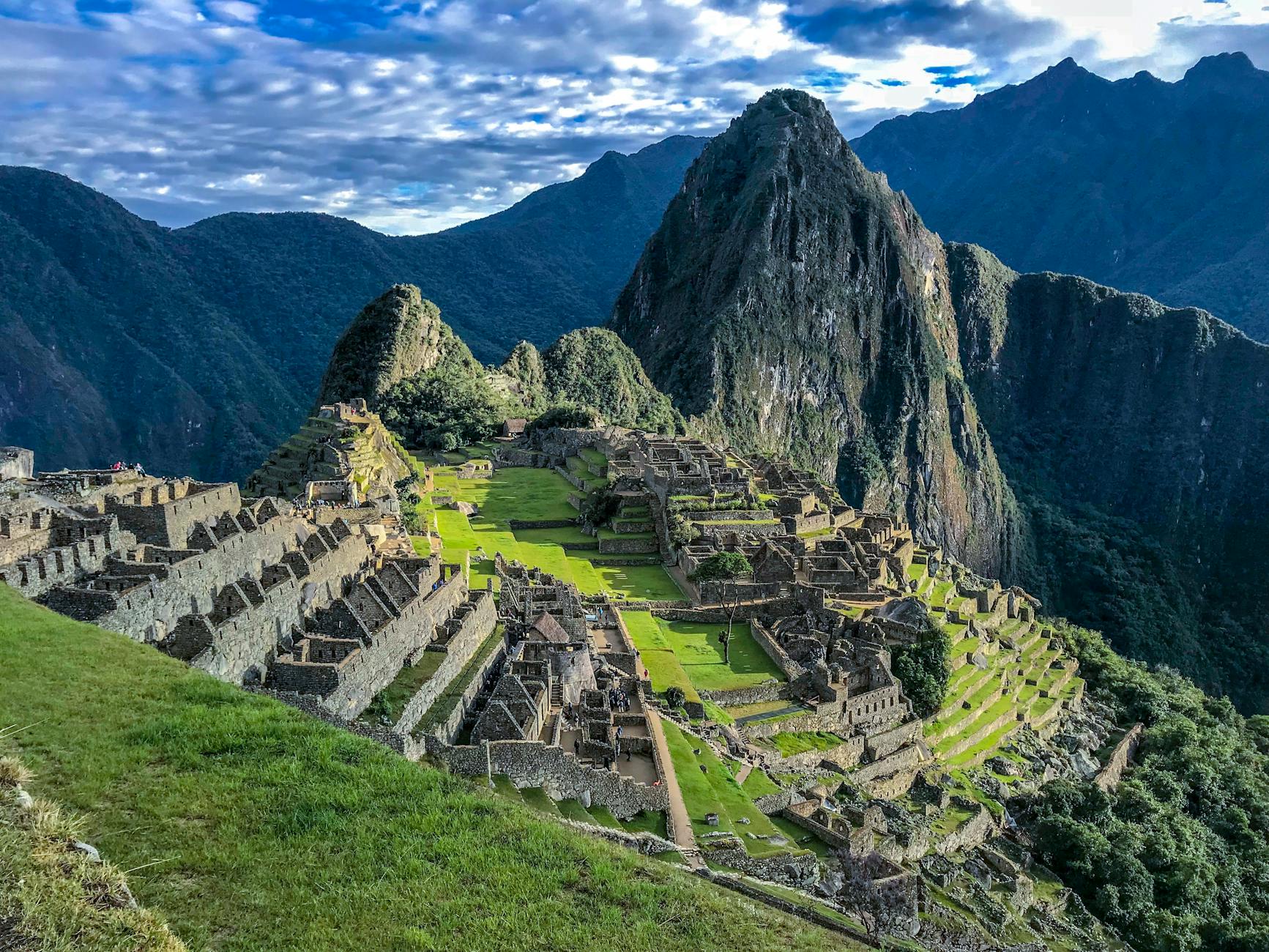 Photo of Machu Picchu (Photo by
Photo of Machu Picchu (Photo by  Fish swimming near bright corals under water (Photo by
Fish swimming near bright corals under water (Photo by  Down Angle Photography of Red Clouds and Blue Sky (Photo by
Down Angle Photography of Red Clouds and Blue Sky (Photo by  Vermilion Flycatcher Bird Perched on a Twig (Photo by
Vermilion Flycatcher Bird Perched on a Twig (Photo by  Humpback whale swimming in deep sea (Photo by
Humpback whale swimming in deep sea (Photo by